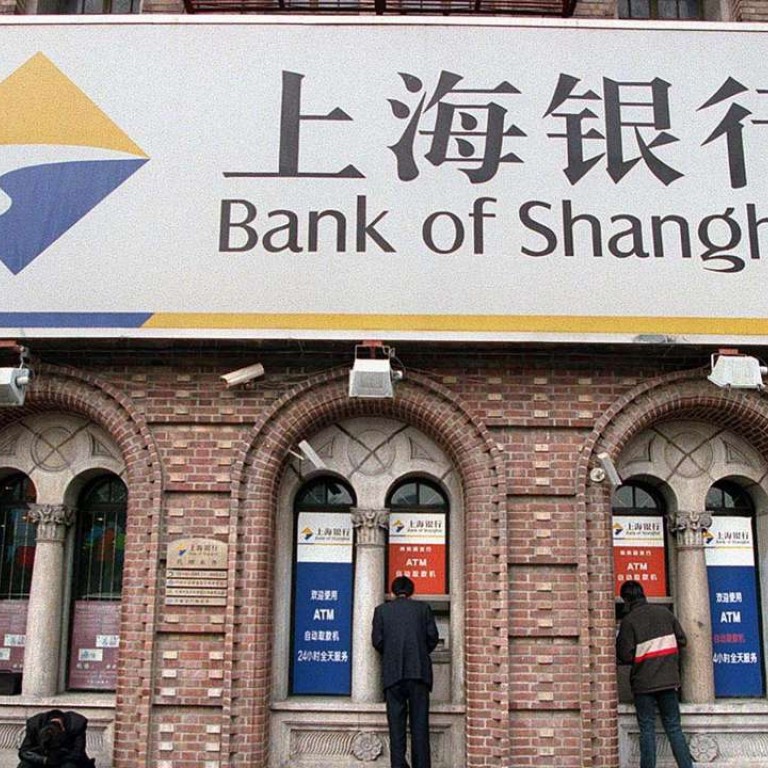
City commercial banks may be weakest link in China’s financial system
Fourteen smaller lenders are set to float. But as interest margins shrink and asset quality deteriorates, analysts fear their ongoing growth threatens the stability of China’s financial system
A fresh batch of China’s smaller regional lenders are poised for initial public offerings (IPOs) on the A-share stock market this year, but their aggressive style in expanding capital levels is making them arguably the weakest link in the country’s financial system, according to analysts.
After halving the expected size of its IPO, Bank of Jiangsu, China’s third biggest so called “city commercial bank”, opened for subscriptions from Wednesday.
Its IPO share price was set at 6.27 yuan (HK$7.27) per share, slightly above the book value per share after the public offering dilution.
The bank first filed its IPO application six years ago, an illustration of just how difficult it has become to list on the mainland market, after the introduction of much tighter regulatory controls to slow the pace of new offerings, when fears grew that too many were now diverting capital from the struggling stock market.
At least 14 city commercial banks, hungry for funding, have announced IPO plans this year, with Bank of Shanghai, Bank of Guiyang and Bank of Hangzhou already given the green light from the China Securities Regulatory Commission.
If listed, the 14 are likely to raise total proceeds worth as much as 72 billion yuan, analysts with Guotai Jun’an Securities estimated in a recent note.
But some analysts believe the new shares offerings, even if reduced in size, are unlikely to be popular with investors.
“Going public could quench the capital thirst of some regional banks, but they are still under big pressure to generate profit as interest margins shrink and asset quality keeps deteriorating,” said one analyst with a Shanghai based brokerage, who asked not to be named.

Compared with big state-owned banks that are better positioned to absorb retail and corporate deposits and use that as funding, joint-stock banks, city commercial banks and rural commercial banks have become highly dependent on interbank funding, he said.
According to numbers from the People’s Bank of China, interbank liabilities accounted for 14.5 per cent of total bank funding by the end of 2015, 2.1 percentage points higher than in 2014.
But some joint-stock and local banks say that their interbank deposits now account for nearly half of the total.
“Such banks are an obvious source of risk: if other banks start to question their asset quality and become reluctant to keep funding them, they would be very vulnerable to any credit crunch,” Chen wrote in a note issued last week, highlighting the lenders as the weakest link in the financial system.
China’s official non-performing loan (NPL) ratio has risen steadily for the past five years, and economists widely believe the official NPL ratio of 2.15 per cent given at the end of May, understates the true figure.
As credit expansion continues to outpace economic growth, leverage is still climbing, amplifying the NPL risk, they say.
Banking analysts at Guotai Junan Securities believe the NPL ratios to be lower in the Yangtze River Delta region, as banks there tend to dispose bad loans gradually.
They also say the asset quality of banks in coastal areas began to stabilise in 2015.
But in central, western and northeastern parts of the country, they warn the banks’ asset quality is worsening.

“The market share of the state-owned “too-big-to-fail” banks has declined dramatically from its peak.”
The five biggest banks accounted for 39.2 per cent of total bank assets by the end of 2015. That’s not only much lower than the 97 per cent in 1997 but also lower than the market share of the top five banks in other major Asian economies, he said.
By the end of 2015, there were 132 city commercial banks in China.
Ranked by asset scale, Bank of Beijing, Bank of Shanghai, Bank of Jiangsu, Bank of Ningbo and Bank of Nanjing were the top five.
By the end of 2015, the total assets of all city commercial banks reached 22.68 trillion yuan, a 25.4 per cent rise compared with early 2015, accounting for more than 11 per cent of total assets in the banking industry, according to Research and Markets.
A number of regional banks have turned to the market in Hong Kong for funding in recent years, including Bank of Chongqing, Bank of Jinzhou, Bank of Qingdao.
But their stocks remain a hard sell, with investors increasingly wary, believing they would be the first to absorb any losses, in a credit crunch.

